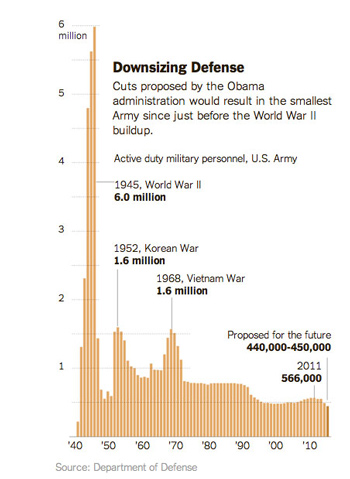

Vol. 78/No. 11 March 24, 2014
At a Feb. 24 news conference, Secretary of Defense Charles Hagel announced plans to cut the number of active-duty soldiers from 520,000 to between 440,000 and 450,000. Special operations forces, however, will increase by 6 percent to nearly 70,000.
The plan would eliminate the Air Force’s fleet of 300 A-10 jets, used heavily in Iraq and Afghanistan to support ground troops. Other cutbacks include replacing U-2-manned spy aircraft with Global Hawk drones; reducing the Navy’s use of littoral combat ships; and increasing health premiums of active and retired military members.
Washington still accounts for one-half of the world’s military spending and possesses the most advanced weaponry and military technology.
The Obama administration is in some respects like none other before it. The president is neither an experienced businessman, a tested general or a seasoned bourgeois career politician. Presiding over the government on behalf of the capitalist ruling class, the heart of the Obama administration beats with that of the self-styled cosmopolitan meritocracy, drawn not from the big owners of capital but from the highly-paid professional, academic and administrative layers of the middle classes.
Divorced from the processes of capitalist production, these social layers serve to maintain the social relations of capitalist production. Existing solely at the behest of the propertied rulers, they are insecure, bourgeois-minded in values and moral outlook, but lacking the confidence of the bourgeoisie. This shapes their world view and approach to U.S. foreign policy.
Obama’s foreign policy is marked by the notion that Washington’s interests can be advanced best through dialogue and acknowledgement that U.S. meddling is the cause of the world’s problems.
“America is not the crude stereotype of a self-interested empire,” said Obama in his Cairo University speech of June 2009.
“Our efforts must be measured against the history of putting American troops in distant lands among hostile populations,” he said at the National Defense University last year. U.S. military action “risks creating more enemies and impacts public opinion overseas.”
But the weakness it projects and the consequences for U.S. capitalist interests — from Iraq to Afghanistan to Libya and Syria — has led to growing opposition within the ruling class.
The administration’s response to conflicts in the world shows a lack of confidence and unpredictability. Its first inclination has been to rely heavily on hunter-killer operations by special forces and aerial drones, avoiding any boots on the ground. But when plans go awry and things appear out of control, the administration has shown a tendency to lash out with dangerous consequences.
‘Based on fantasy’
The New York Times praised the Pentagon’s proposals Feb. 26 as “a military budget to fit the times.” But the Washington Post, a prominent liberal newspaper that has backed Obama, ran an editorial March 2 headlined, “President Obama’s Foreign Policy Is Based on Fantasy.”“For five years, President Obama has led a foreign policy based more on how he thinks the world should operate than on reality,” the Post said.
It’s time for “a more interventionist phase,” wrote conservative columnist Max Boot in the Weekly Standard. “There is an opening here for a presidential contender smart enough to grasp it. If history is any judge, the swing back to interventionism is coming, and soon.”
History also shows how the army’s size can change rapidly. In 1945 at the end of World War II it reached 6 million, rising from well below half a million five years earlier. After then downsizing to about half a million in 1950, it rose over the next two years to 1.6 million during the Korean War. Similarly, during the Vietnam War troop levels were below 1 million in 1965, but up to 1.6 million three years later.
Doubts about Afghan troop ‘surge’
Obama ran for president in 2008 calling for withdrawing U.S. troops from Iraq and reinforcing those in Afghanistan. At the end of 2009 he ordered a 30,000-troop “surge” there. But the president “did not really believe the strategy he had approved would work,” wrote Robert Gates, former defense secretary under Obama, in his recently published memoirs.“When he finally terminated the surge he did so in the middle of the 2012 fighting season. Militarily incoherent — but politically convenient. It allowed Obama to campaign for reelection proclaiming that ‘the tide of war is receding,’” wrote Charles Krauthammer in the American Conservative.
“Don’t ‘Iraq’ Afghanistan,” headlined a Jan. 20 Army Times editorial, drawing a parallel between the Taliban reasserting its dominance once U.S. forces leave with the resurgence of al-Qaeda forces in Iraq’s Anbar province, where U.S. troops fought hard battles to defeat them nearly 10 years ago.
In Syria, despite tough talk about drawing a “red line” over Syrian President Bashar al-Assad’s use of chemical weapons, Obama signed a deal with Russian President Vladimir Putin, the Syrian regime’s ally, for removal of these weapons that strengthened Assad’s hold on power.
The military cutbacks don’t represent a march toward a peaceful America. The most powerful ruling class in history finds its interests around the world more, not less, threatened — and will do what is necessary to protect them.

|